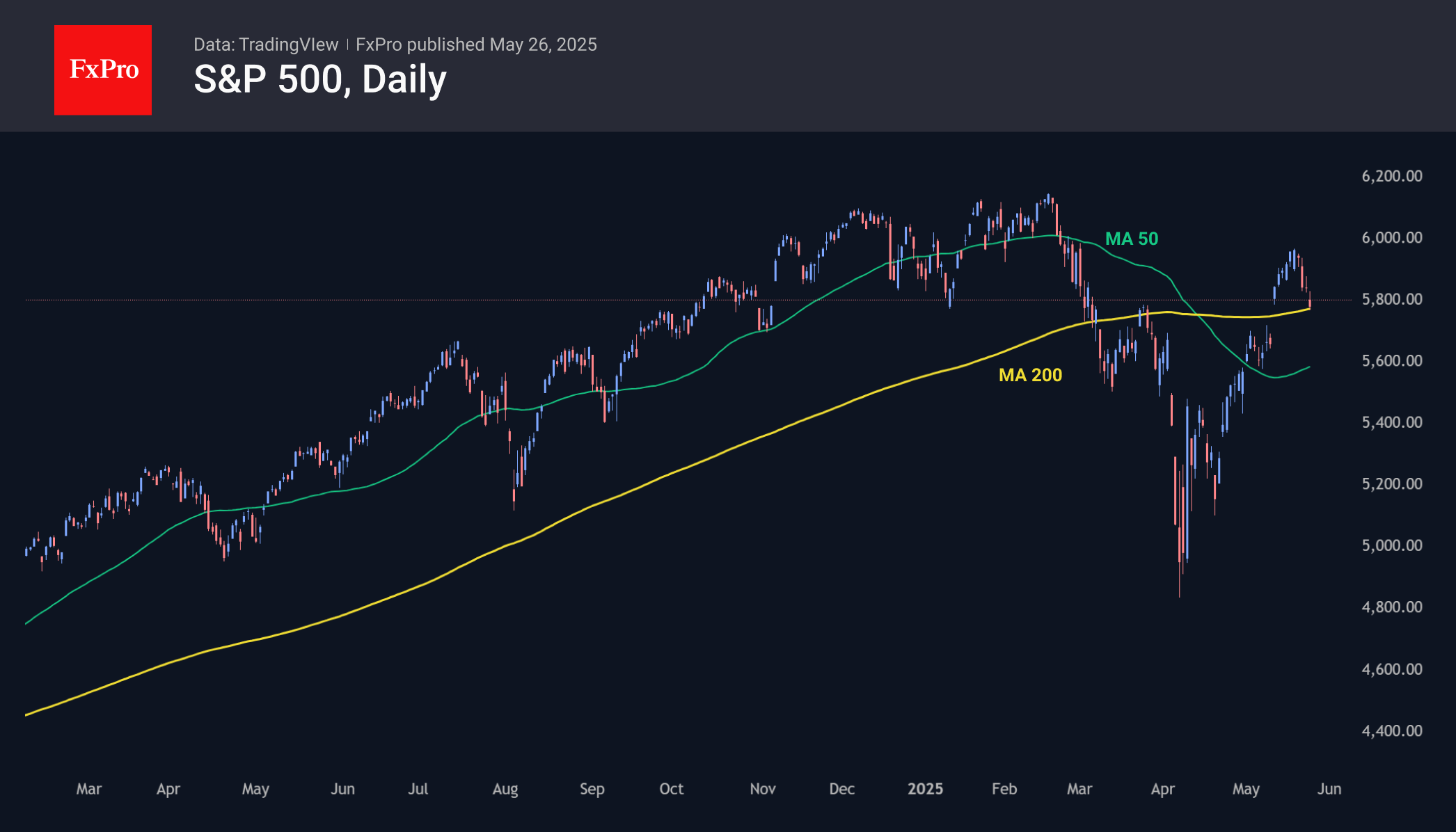Postponing 50% tariffs for the EU helped the S&P 500 bounce off its 200-day lows

Postponing 50% tariffs for the EU helped the S&P 500 bounce off its 200-day lows
The U.S. president said he delayed imposing 50% tariffs on EU imports after a call from the president of the European Commission. On this news, S&P500 index futures are adding nearly 1.5% on Monday, pushing back from the 200-day moving average as support. Unlikely to be intentional, but Trump has helped in the formation of an important bullish pattern, keeping the key US market index above the psychologically important curve that separates a rising market from a falling market.
The index was above that line on May 12th but started to give up ground just under a week ago and briefly fell below 5800 last Friday on unexpected news of 50% tariffs. The leisurely pace of negotiations by European bureaucrats has infuriated the US President, who has so far had no meaningful progress on tariff deals with the EU as opposed to some agreements with the UK, China and several other partners.
The first technical line of resistance now looks to be the 6000 area on the S&P 500, near where the index last peaked. If we continue to receive positive trade signals, it could open the fast track to the historical highs at 6100-6150, a 4-4.5% upside.

However, a reliable rise higher will require more than postponing tariffs or promising negotiations. It is also possible that the very fact that deals are being made will be a ‘sell the facts’ signal. The only truly fundamental growth driver for equities seems to be a shift in Fed sentiment from the current postponement of rate cuts to policy easing or, better yet, a return to the market with long-term bond buying.
So far, there are few signals of such a shift in sentiment, as the Fed's balance sheet shrank by $24.5bn last week. Over the past month, markets have shifted expectations for the next key rate cut to September, giving a 41% chance of keeping it at the current level versus only 1.6% a month ago. And the base case scenario was two cuts versus four at the end of the year.
By the FxPro Analyst Team
-11122024742.png)
-11122024742.png)



















